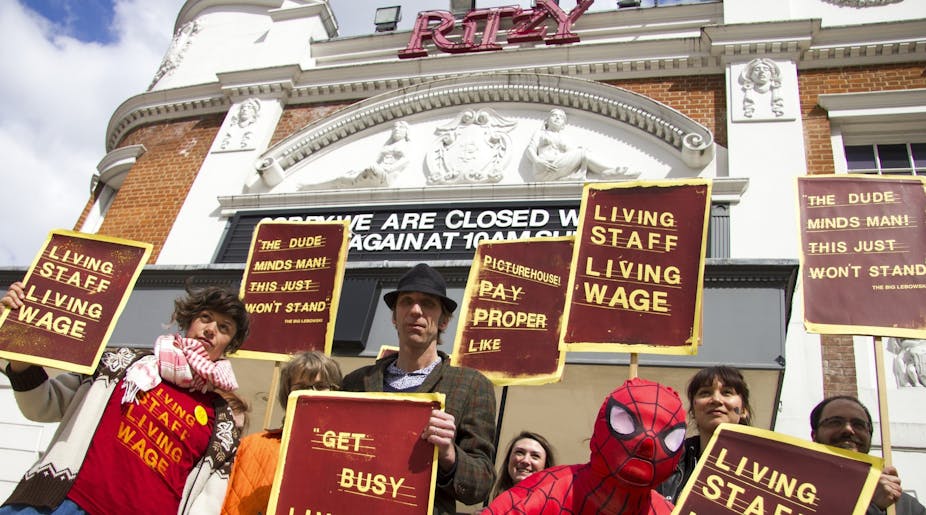In the UK, according to the Living Wage Foundation, some 1,000 firms have pledged to offer a living wage, including household names like RBS, ITV and SSE. Earlier this week the annual rate increase was announced, raising it nearly 3% to £7.85 per hour (£9.15 in London). Over the year, this works out at just under £13,000 for someone who works the average number of hours in a year.
The difference between the minimum wage and legal wage is that while both indicate a level below which employers will not pay, the minimum wage is a legal requirement set by the UK government that covers nearly all employers. On the other hand, firms voluntarily commit to offering living wages to their employees – at least in this country. In the US some cities such as San Francisco have city-wide living wage ordinances.
Those in favour…
Why pay a living wage? This has been a topic of debate among academics and non-academics alike – and frankly there is little consensus. The general motivation is to reduce poverty. The current minimum wage is £6.50 per hour (or about £10,750 per year), which is considerably less than the amount needed to keep a household above the poverty level (the ONS estimated that would require £13,700 in fiscal 2012/13). Indeed, the living wage is set in explicit reference to the poverty threshold (albeit it has yet to reach that level).
A more subtle but still important issue is that living wages give stronger incentives to work for those who are currently on benefits but risk losing their standard of living by moving into low-paid jobs. If work does not guarantee an exit from poverty, the incentive for moving people from welfare programmes to work is greatly diminished.
In addition, the living wage has the potential to produce a more satisfied workforce – important because a satisfied workforce is generally more productive and stable. Finally, there are potential benefits for firms being seen as good employers. It boosts staff retention and enables the company to market itself as a “living wage employer”, which can appeal to potential customers for whom social justice issues are important.
Those against…
Despite these multiple benefits, I would not be a good economist if I did not outline the potential costs. The primary criticism of the living wage is similar to the minimum wage – it drives up wages by spurring the next worker up the scale to ask for a higher wage, which leads another worker to complain about their wage and so on.
The firm can end up having to sacrifice employment as labour becomes more expensive. The evidence of this is actually quite inconsistent, even if it has some intuitive appeal. But if true, then while some may benefit from the increased wages, those who lose their jobs are certainly worse off.
There is also the potential for other costs. One is that rather than firms reducing employment, they may change the composition of compensation, reducing other benefits such as pensions so that total compensation may stay relatively constant, even if cash income has gone up.
Perhaps this is not seen as an immediate cost to low-paid workers who need increased financial resources now, but society may bear a cost if workers do not have adequate pensions when they retire. Since the ability to mitigate the effects of poverty is harder for retirees, lower employer pension benefits increase the likelihood of poverty among the elderly.
Final word
So how does the ledger look overall? As an anti-poverty tool, the living wage is fairly blunt. Poverty thresholds are generally based on household size – and there is no flexibility to alter these rates based on household size. And while it does help pull the employed out of poverty, it generally has little effect on those not currently working – the vast majority of the poor.
On the other hand, the incentives for welfare-benefit recipients to find work are much stronger if firms offer living wages. They are thus more humane motivators for work than benefit-cut threats. Additionally, it is probable that many UK firms discount the costs associated with living wages – otherwise they would not voluntarily agree to them.
On balance, while the living wage may not affect a large majority of the poor, it has real benefits for those receiving such payments and offers prospects for higher standards of living. If a firm voluntarily offers such wages, this should be applauded and supported since it must realise a value in paying living wages. Understanding how these realisations might be applied to other firms would seem a sensible policy to make further inroads in the fight against poverty.
Next, read this: The living wage on its own won’t win the war on poverty

